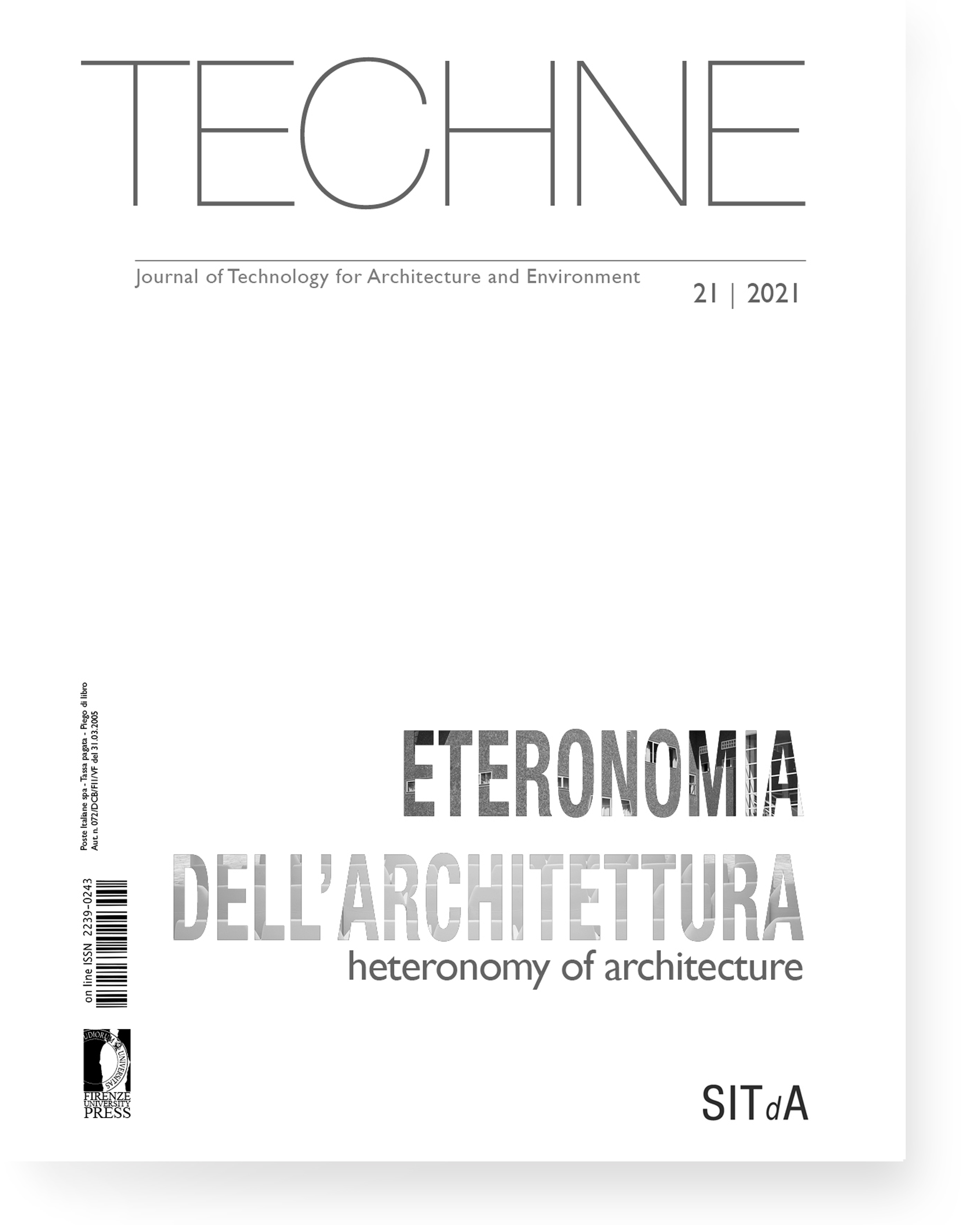Published 2021-05-26
Keywords
- .
How to Cite
Abstract
Following in the footsteps of the protagonists of the Italian architectural debate is a mark of culture and proactivity. The synthesis deriving from the artistic-humanistic factors, combined with the technical-scientific component, comprises the very root of the process that moulds the architect as an intellectual figure capable of governing material processes in conjunction with their ability to know how to skilfully select schedules, phases and actors: these are elements that – when paired with that magical and essential compositional sensitivity – have fuelled this profession since its origins.
The act of X-raying the role of architecture through the filter of its “autonomy” or “heteronomy”, at a time when the hybridisation of different areas of knowledge and disciplinary interpenetration is rife, facilitates an understanding of current trends, allowing us to bring the fragments of a debate carved into our culture and tradition up to date.
As such, heteronomy – as a condition in which an acting subject receives the norm of its action from outside itself: the matrix of its meaning, coming from ancient Greek, the result of the fusion of the two terms ἕτερος éteros “different, other” and νόμος nómos “law, ordinance” – suggests the existence of a dual sentiment now pervasive in architecture: the sin of self-reference and the strength of depending on other fields of knowledge.







